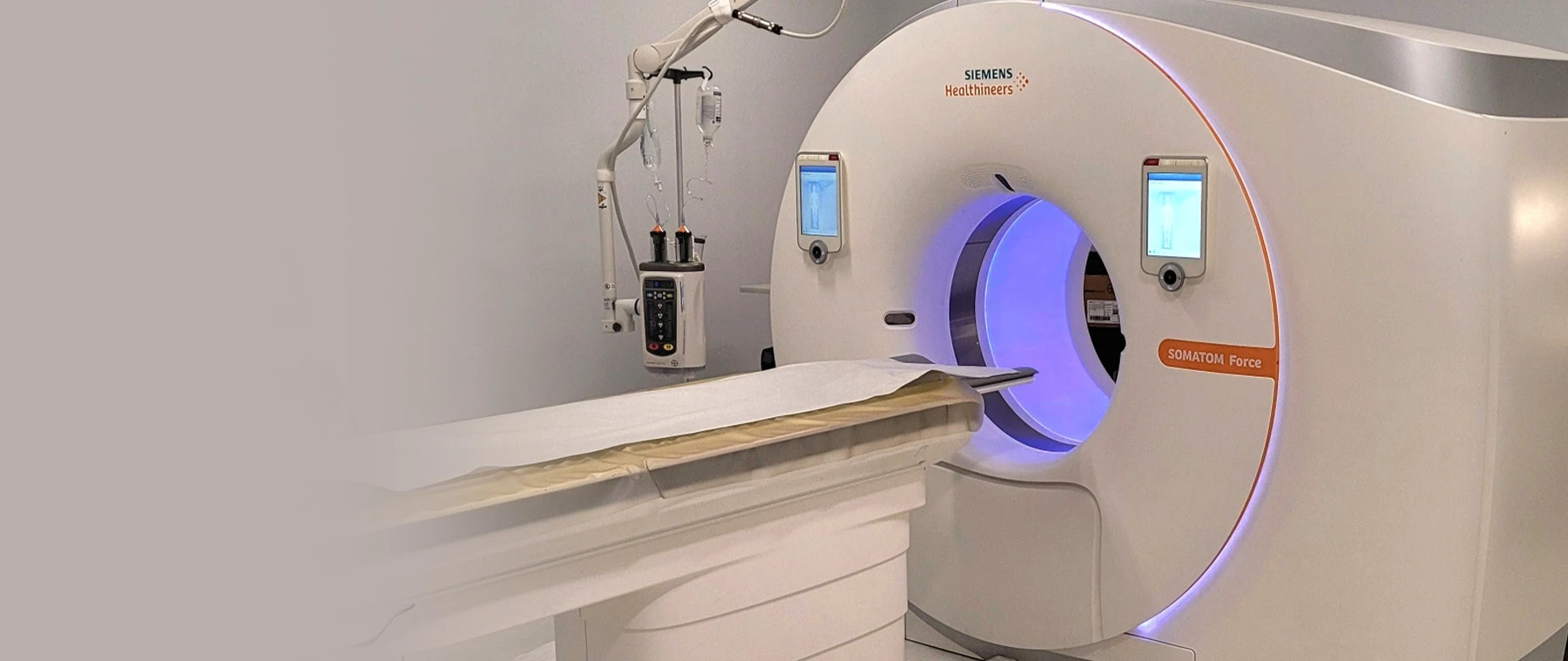Virtual Colonoscopy
Routine screenings are now less invasive.
What to expect
No sedation
Requires preparation
Call office to pick up kit
- While lying on the CT table, a thin, rubber tube will be inserted into the rectum and air is passed through the tube.
- You will be asked to hold your breath for 15 seconds while the CT scanner obtains images.
Advanced Technology Minimizes Discomfort
Once you reach age 50, we strongly recommend you schedule a routine screening for colon cancer. And if you're at a higher risk of developing colon cancer, we'd like to see you before you hit that milestone birthday.
- The typical screening has long been associated with discomfort and possible complications. But the advanced technology we use in our New York offices eliminates those concerns.
- Our latest-generation CT scanners deliver 3D images displayed on specialized computer.
The Virtual Colonoscopy Procedure
A non-invasive medical imaging technique that uses CT scans to create detailed images of the colon and rectum. The procedure is often used as an alternative to traditional colonoscopy for screening and diagnosis.
How to Prepare for a Virtual Exam?
- You'll prepare for a virtual colonoscopy just as you would a conventional one.
- To ensure the colon is free of any fecal matter, a bowel-cleaning regimen should be followed the day prior to the exam. You can obtain a kit from our office.
What to Expect During the Exam
- While lying on the CT table, a thin, rubber tube will be inserted into the rectum and air is passed through the tube. You will be asked to hold your breath for 15 seconds while the CT scanner obtains images, first taken while you're on your back and then while on your stomach.
- You can expect mild stomach cramping after the procedure due to the air that was inserted into the colon. But you'll be able to resume normal daily activities soon after the procedure.
Non-Invasive Procedure Shown to be Highly Accurate
For years, medical experts recommended that most people get a colonoscopy when they turned 50. But the American Cancer Society has dropped that age to 45, and with good reason: Colorectal cancer is the third most common cause of cancer-related death in the U.S. However, if detected early through a colonoscopy or other means, the survival rate for patients is 90%.
The challenge is to get people to schedule a traditional colonoscopy, which includes an uncomfortable bowel-emptying process before the procedure. In other cases, people willing to undergo the traditional procedure cannot do so because the camera-carrying colonoscope, which has the thickness of a pen, cannot be inserted into their colon due to a blockage or some other reason.
The alternative is a virtual colonoscopy, also known as CT colonography. Main Street Radiology has been performing these non-invasive imaging tests for several years now, and studies indicate they can be just as accurate as traditional colonoscopies in locating both tumors and pre-cancerous polyps.
Case History: A 77-year-old female underwent conventional screening colonoscopy. The gastroenterologist could not pass the colonoscope beyond the descending colon. The patient was referred to Main Street Radiology for a virtual colonoscopy (CT colonography).
Findings: A 2 cm pedunculated polyp was identified within the ascending colon on virtual colonoscopy (Figures 1 and 2). On the routine axial image (Figure 3), the polyp (red arrow) is of similar density as the mesenteric fat (white arrows), compatible with a lipoma.

Figure 1

Figure 2

Figure 3
Discussion: Colonic lipoma is the second most common benign colonic tumor (next to adenoma), and the most common intramural tumor. The colon is the most common site of gastrointestinal lipomas. Colonic lipomas may be sessile or pedunculated, usually submucosal in location, and covered by normal mucosa.
Colonic lipomas usually do not cause symptoms. Rarely, patients may present with abdominal pain secondary to intussusception. Ulceration of a lipoma may occasionally cause bleeding.
Traditionally, definitive diagnosis was made with resectional biopsy. Higher incidence of bowel perforation has been reported with biopsy of colonic lipomas, due to their intramural location. Definitive diagnosis can be made on CT colonography, negating the need for biopsy.
A major advantage of CT colonography is that it is non-invasive. It has been especially beneficial after a failed or incomplete conventional (optical) colonoscopy.
On a published study (New England Journal of Medicine 2003; 349: 2191-2200), new techniques were discussed, showing accuracy comparable to conventional colonoscopy. The sensitivity of virtual colonoscopy for polyps greater than 10 mm was 93.8 %, compared to 87.5% with conventional colonoscopy. Newer techniques utilized included, thin (1.25-2.5 mm) slices with a multi-detector (4 or 8 slice) spiral CT, and 3D "fly-through" software.
With our 16-detector CT, Main Street Radiology is now performing virtual colonoscopy with 0.75 mm slices, with resolution higher than obtained by the New England Journal of Medicine authors. We also utilize 3D "fly-through" software. With these new techniques, virtual colonoscopy may become a viable alternative to conventional colonoscopy, at lower cost and morbidity.
Five convenient locations
Schedule an Appointment
Online
Fill out this form and we'll contact you as soon as possible. Please do not include any personal or financial information when using this form.
By Phone
Call or text to schedule an appointment. You may text us any required information (name, date of birth, and a picture of your prescription.) and a scheduling representative will be in touch.
- Call Us: (718) 428-1500
- Text Us: (929) 430-2761
HOURS
Monday-Friday: 8 a.m. to 8 p.m
Saturday: 8 a.m. to 4 p.m.
Sunday: 8 a.m. to 2 p.m. (Flushing Office Only)

